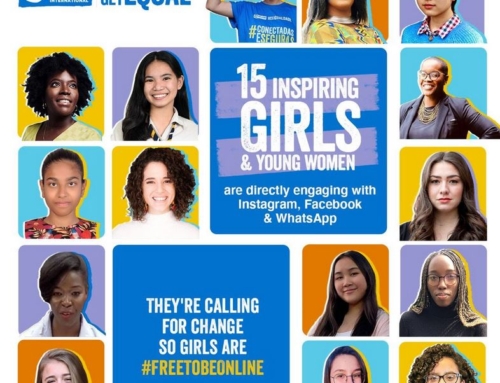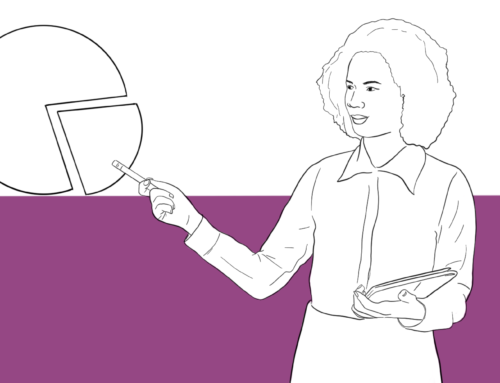Visual communication is a must-have skill for everyone who works with or uses data. This is because even with the best (high quality) data, it remains worthless if no one can understand it. The study of using a visual or artistic approach to represent data is what is considered data visualization.
Our fourth virtual event focused on introducing participants to data visualization and we explored what it really means, how it is done, and tips on communicating effectively when doing data visualization and all this is explored in this blog.
So, what does data visualization really mean?
In simple terms, the representation of data or information in a chart, graph, or any other visual format is data visualization. Data visualization is widely used by organizations of all sizes because it makes it easier and quicker to identify patterns and trends in your data sets and our brains process visualized information much more effectively. All this makes data visualization the most ideal way to communicate data findings. As a popular saying states “A picture is worth a thousand words”, a #DataViz is that picture that represents your large data set.
Who uses data visualization?
Data visualization is for everybody and we are all either consumers or producers. Regardless of the work you do, if you have a smartphone and use the internet chances are you have interacted with a data visualization as a consumer. This could have been through the calendar app, the weather app, or even in areas such as “internet and storage” usage on your device.
How is it done?
Although data visualization is superior compared to the traditional reporting methods, it must be done well in order for one to communicate their findings effectively. So both good and bad data visualizations do exist. A good data visualization is one that possesses traits such as usefulness; one can use it to make a relevant decision, desirability; it’s not only easy to use but also pleasurable to use and usability; one who uses it can accomplish their goals quickly and easily. And all these can be attained when one follows a process.
Before creating your data visualizations, you should have an understanding of your data as this helps you determine which visuals to use. Zoom in and out of the data and pick out interesting insights to portray and concentrate on only communicating the key insights. In most cases, putting it all in can be dangerous to the consumer and might create confusion.
When creating your data visualization, have your audience at the back of your mind and first understand who they really are, what visuals resonate best with them, what colors amplify your data story and what illustrations draw the audience in. A common mistake data visualization designers do is choosing the most attractive visuals. Visuals should not only be attractive but should match both the data you have and the audience. There are a vast of visuals to choose from and these include;
- Line charts — a chart that displays information in the form of data points connected by line segments. These are often used to reveal trends, progress, or changes that occur over time, and work best with continuous data.
- Bar charts/column charts — a chart or graph that presents data with the help of rectangular bars that are proportional to the values they represent and work best with categorical data on one of the axes.
- Histograms — histograms are similar to bar charts. The main difference between the two is that histograms are used for only numeric data and the bars in a histogram are mostly pushed together.
- Area charts — a chart similar to a line graph but with emphasis on the area under the line. This is usually done by filling the area between the line and the x-axis with color or shading.
- Scatter plots — commonly used in statistical analysis, scatter plots help explore the association between two numeric features/variables.
- Pie charts — a circular chart divided into proportions each representing a proportion of a different category.
- Other visuals include bubble charts, heat maps, word clouds, dual-axis charts, violin plots, box plots, funnel charts, etc
Although numerous chart types or visuals exist, it is always advisable to start from the simplest and most commonly used charts i.e. bar charts, line charts, and pie charts before progressing to more complex options. Remember, a chart is only useful when it packages information in a way that makes it quickly understandable at a glance. So breaking up a complicated chart into smaller chunks can be an effective way to visualize your data. For example, a chart can communicate an increase or a decrease or show how one category compares to another.
After understanding your data and choosing the visuals that communicate your data to your audience best, one now needs to choose a data visualization tool to use.
All data analysis and data processing software provide means for data visualization but one can always opt for tools specifically designed for data visualization purposes. Such tools include Canva, Infogram, Flourish, Raw Graphics, etc. When choosing a data visualization tool to use; one can consider the ease of use, ease of integration, data protection policies especially with web-based platforms, use costs, etc.
Once you have chosen the tools to design your data visualizations, always remember to keep it simple, display only the important information, avoid overloading your data, ensure your charts require little to no explanation, and stay away from 3D. Color is also a very important aspect of your visualization because when done well, it can bring out the key aspects of what you are trying to communicate but when done poorly can provide a distraction.
Understanding your audience can be tricky at times. One can tackle this by creating a persona of who your target consumer is. Who do you want this chart to speak to? You should name the person, give them an age, a character. How does Susan receive info? On her phone, or laptop? Does she have good connectivity? Should I then make my chart an image or a video? Should I make an infographic or a dashboard?
More tips for effectively communicating with data visualizations;
DataViz in practice
Data visualization has been around for a very long time. In 1854, a popular doctor called John Snow created a map depicting cholera cases, that changed the world. He used small bar charts to mark the number of cholera deaths and cases at each household in a London neighborhood and these visualizations revealed a root cause problem that inspired a solution.
Another is W.E.B. Du Bois whose colorful charts, graphs, and maps presented at the 1900 Paris Exposition offered a view into the lives of black Americans, conveying a literal and figurative representation of “the color line.”
In 2018, Dima Yarovinsky presented his “I Agree” project which visually showcases printed terms and conditions for major social apps such as WhatsApp, Google, Tinder, Twitter, Facebook, Snapchat, and Instagram highlighting what we are always getting into when we click on “I agree” on web services.
There is no doubt that data visualization is an essential part of working with data. However, if not done right, data visualization ceases to be useful. The key to creating truly powerful data visualizations is to start right from the beginning by understanding context (your audience and what they care about), following simple design techniques, reducing the clutter (unnecessary and distracting visual elements), and avoiding design pitfalls (such as using pie charts with more than seven wedges).
Additionally, always remember that even though a picture is worth a thousand words, when it comes to data visualization one should always add some context to the visuals in the form of text to communicate much more effectively. That is how one creates a truly powerful data visualization.
Written by Arthur Kakande, Communications Lead at Pollicy. Designs by Wilson Lukwago, Design Lead at Pollicy.





Leave A Comment